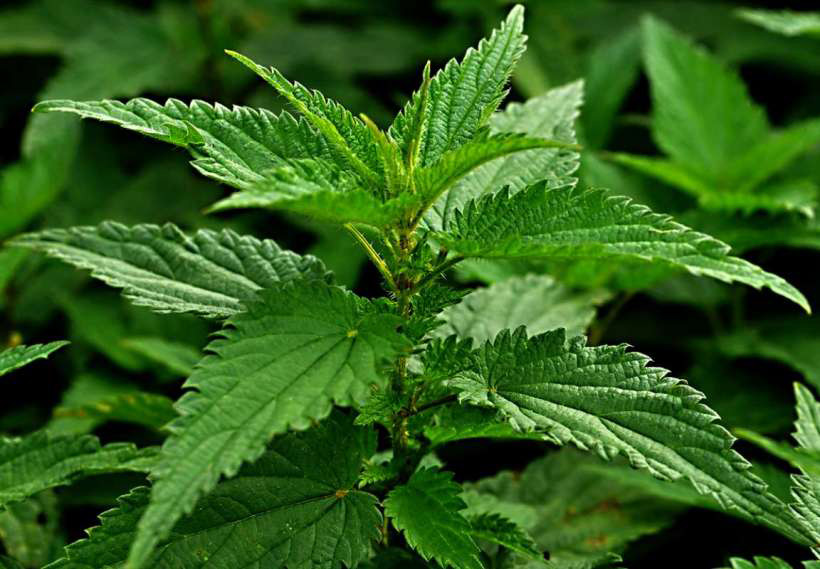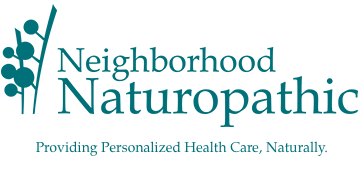Spring is finally here again, and we are seeing green plants start to reappear. One of the first herbs we find sprouting is Urtica, AKA Stinging Nettle. The bright green shoots will push through the layer of brown leaves as soon as days being to lengthen and the crisp air softens, a display of the vitality and hardiness for which this herb is well known. Truly, this herb grows like a weed, packs a mighty sting, but is a hidden medicinal gem in our backyards and wooded areas.
Qualities: Nutritive, astringent, hemostatic, galactagogue, expectorant, mild diuretic, anti-inflammatory. This cool and slightly bitter herb helps drains dampness, and is a wonderful long term tonic.
Warnings: When mature, this plant will sting! Tiny prickles under the leaves and on its stem will cause burning stings. Cooking will inactivate these needles, however. After it’s flowers appear, this herb should no longer be used as food, and only the seeds should be harvested as medicine.
Uses: All parts of Urtica can be used for medicine, and it is a nourishing food when immature. Cooked nettles are a source of iron, and the dark green leaves have a nice flavor and many micronutrients – cook it like spinach or dark greens. Nettle tea can help expectant and nursing mothers by providing iron and micronutrients, and helping regular milk production.
When used externally, the sting of this plant may reduce pain of arthritis; this is in part to a counter-irritant effect (the lesser burn of the nettle with mask the greater pain of arthritis) and a direct anti-inflammatory effect which will last long after the sting wears off. This treatment is not for the faint hearted, however!
The evidence base of this herb shows positive effects on high blood pressure. Nettle may also help regulate blood sugar. The mechanisms for these benefits are likely due to direct effects on cell signaling pathways such as inhibition of α-amylase and α-glycosidase, increase of NO, modulation of GLUT4 and protection of pancreatic β-cells.
The roots and seeds have diuretic (water reducing) effects. They are also known aid to prostate hyperplasia (BPH) and other prostate troubles.
Dried nettle helps with histamine metabolism, mild food allergies, and seasonal allergies. these effects and as the anti-inflammatory and anti-oxidant properties of this herb are attributed to constituents such as polyphenols, triterpens, sterols, flavonoids. Nettle is a powerful ingredient in many anti-allergy formulations.
Forms: The whole immature herb, rots, and seeds can be used as food, tea, tincture, or topically, and the freeze-dried whole herb and/or standardized extracts can be used in supplements.
Description: Nettle is a perennial that is found in nearly all parts of North America. This plant can grow up to 9 feet tall. The leaves tend to be wide and rounder when plants are young and small, and become narrow as the plant grows. All nettles have a square stem and stinging hairs on the underside of the leaves. This pant is considered invasive and can form massive colonies. Nettle will be found in partial shade and damper soil.

References:
Joanna Suliburska 1, Karolina Kaczmarek. Herbal infusions as a source of calcium, magnesium, iron, zinc and copper in human nutrition. Int J Food Sci Nutr. 2012 Mar;63(2):194-8. doi: 10.3109/09637486.2011.617359.Epub 2011 Sep 14.
Mohammad Hassan Hodroj 1, Nour Al Hoda Al Bast 1, et al. Nettle Tea Inhibits Growth of Acute Myeloid Leukemia Cells In Vitro by Promoting Apoptosis. 2020 Aug 28;12(9):2629. doi: 10.3390/nu12092629.
Özalkaya E, Aslandoğdu Z, et al. Effect of a galactagogue herbal tea on breast milk production and prolactin secretion by mothers of preterm babies. J Clin Pract. 2018 Jan;21(1):38-42. doi: 10.4103/1119-3077.224788.PMID: 29411721
Testai L, Chericoni S, et al. Cardiovascular effects of Urtica dioica L. (Urticaceae) roots extracts: in vitro and in vivo pharmacological studies. Ethnopharmacol. 2002 Jun;81(1):105-9. doi: 10.1016/s0378-8741(02)00055-7.PMID: 12020933
El Haouari M, Rosado JA. Phytochemical, Anti-diabetic and Cardiovascular Properties of Urtica dioica L. (Urticaceae): A Review. Mini Rev Med Chem. 2019;19(1):63-71. doi: 10.2174/1389557518666180924121528.PMID: 30246639
Cicero AFG, Allkanjari O, et al. Nutraceutical treatment and prevention of benign prostatic hyperplasia and prostate cancer. Arch Ital Urol Androl. 2019 Oct 2;91(3). doi: 10.4081/aiua.2019.3.139. PMID: 31577095
Keith Rayburn 1, Eric Fleischbein, et al. Stinging nettle cream for osteoarthritis. Altern Ther Health Med. Jul-Aug 2009;15(4):60-1. PMID: 19623834
Roschek B Jr, Fink RC, et al. Nettle extract (Urtica dioica) affects key receptors and enzymes associated with allergic rhinitis. Phytother Res. 2009 Jul;23(7):920-6. doi: 10.1002/ptr.2763. PMID: 19140159
